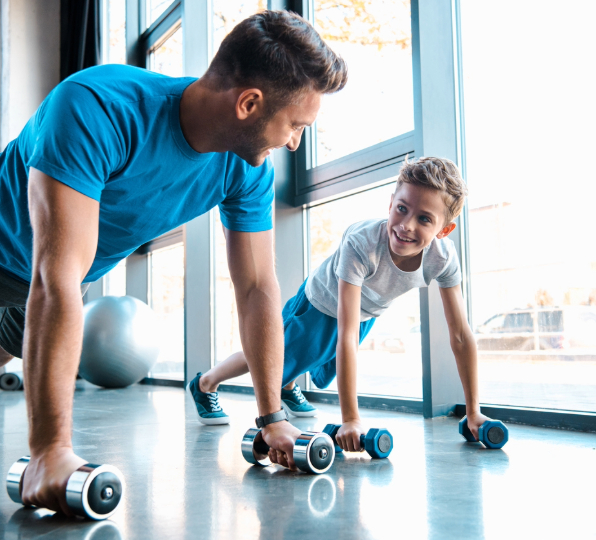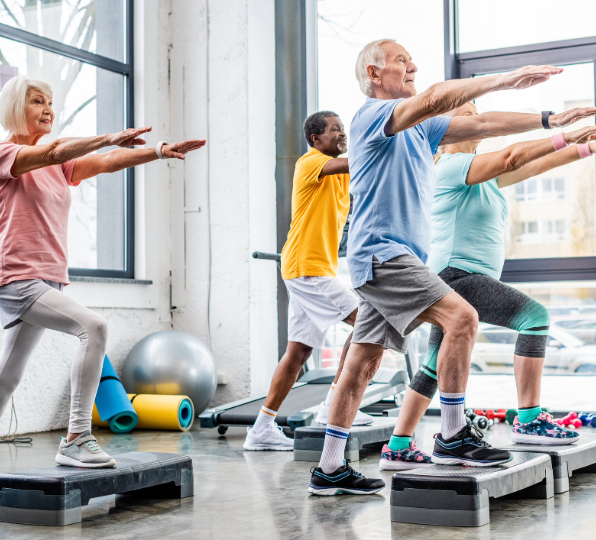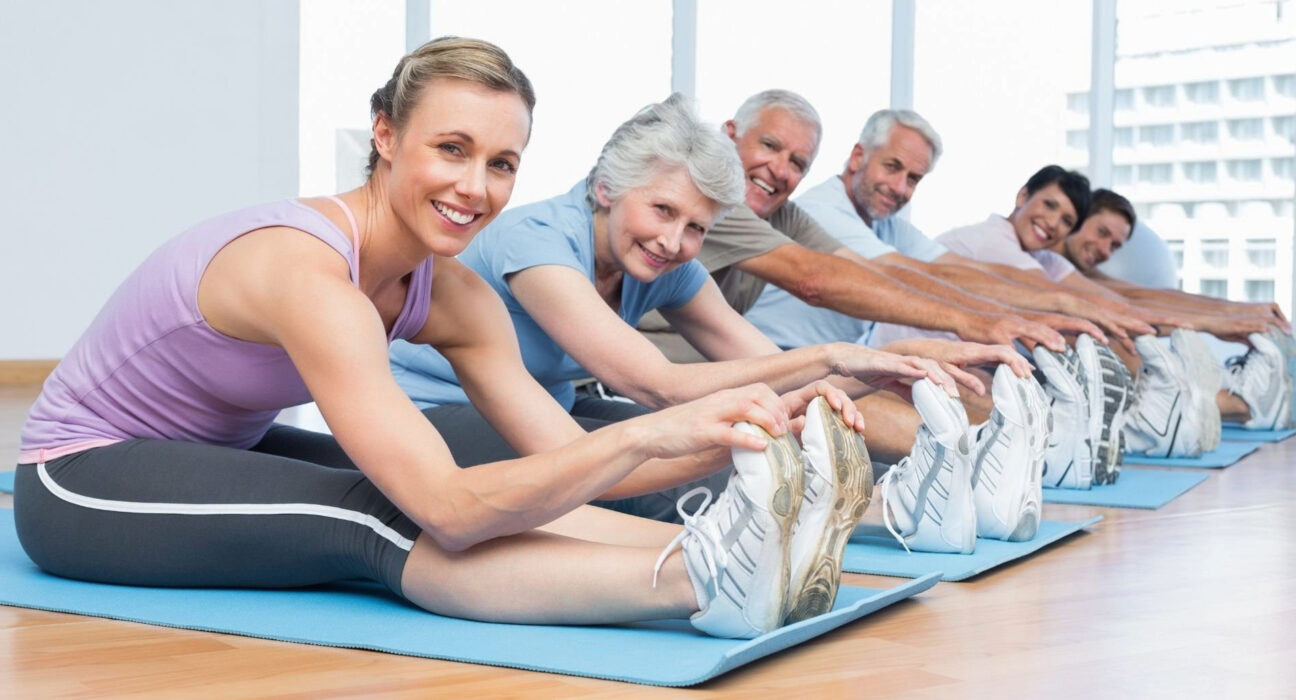Introduction:
Physical activity is essential for maintaining good health and well-being at every stage of life. For adults aged 19 to 64, regular physical activity offers numerous benefits, including improved cardiovascular health, weight management, stress reduction, and enhanced mood. In this blog post, we’ll explore the recommended physical activity guidelines for adults in this age group and provide practical tips for incorporating exercise into your daily routine.
1.Understanding the Guidelines
The physical activity guidelines for adults aged 19 to 64 recommend a combination of aerobic activity, muscle-strengthening exercises, and flexibility exercises to promote overall health and fitness. These guidelines are based on scientific evidence and aim to provide individuals with the information they need to maintain an active lifestyle and reduce the risk of chronic diseases such as heart disease, diabetes, and obesity.
2. Aerobic Activity Recommendations
Moderate-Intensity Aerobic Activity: Adults should aim for at least 150 minutes of moderate-intensity aerobic activity per week, spread out over several days. Examples of moderate-intensity activities include brisk walking, cycling, swimming, and dancing. These activities should be performed at a pace that raises your heart rate and makes you breathe harder but still allows you to carry on a conversation.
Vigorous-Intensity Aerobic Activity: Alternatively, adults can engage in 75 minutes of vigorous-intensity aerobic activity per week, such as running, jogging, or playing sports like basketball or soccer. Vigorous-intensity activities require more effort and result in a faster heart rate and deeper breathing.
Combination of Moderate and Vigorous Activity: Adults can also mix moderate and vigorous-intensity aerobic activity throughout the week to meet the recommended guidelines. For example, you could do 30 minutes of moderate-intensity activity five days a week, or 25 minutes of vigorous-intensity activity three days a week, plus one day of moderate-intensity activity.
3.Muscle-Strengthening Exercise Recommendations
Strength Training: Adults should include muscle-strengthening activities on two or more days per week, targeting major muscle groups such as the legs, hips, back, abdomen, chest, shoulders, and arms. Strength training exercises can be performed using body weight, resistance bands, free weights, or weight machines.
Repetitions and Sets: Perform a variety of exercises that target different muscle groups, aiming for 8-12 repetitions of each exercise. Complete one to three sets of each exercise, with a rest period of 48 hours between sessions to allow for muscle recovery and growth.
Progression: Gradually increase the intensity, duration, or resistance of your strength training exercises over time to continue challenging your muscles and promoting strength gains. This could involve increasing the weight lifted, adding more repetitions or sets, or trying more challenging variations of exercises.
4.Flexibility and Balance Exercise Recommendations
In addition to aerobic activity and muscle-strengthening exercises, adults should also include flexibility and balance exercises in their weekly routine. Flexibility exercises help improve joint mobility and range of motion, while balance exercises help reduce the risk of falls and maintain stability.
Flexibility Exercises: Incorporate stretching exercises that target major muscle groups, holding each stretch for 10-30 seconds without bouncing. Focus on stretching the muscles of the calves, thighs, hips, back, chest, shoulders, and arms. Yoga, Pilates, and tai chi are excellent forms of exercise that promote flexibility, balance, and relaxation.
Balance Exercises: Practice balance exercises such as standing on one leg, heel-to-toe walking, or balancing on a stability ball or foam pad. Aim to perform balance exercises for at least three days per week to improve stability and coordination.
5.Incorporating Physical Activity into Daily Life
Active Transportation: Incorporate physical activity into your daily commute by walking or cycling to work, taking the stairs instead of the elevator, or getting off public transportation a few stops early and walking the rest of the way.
Household Chores: Turn household chores into opportunities for physical activity by vacuuming, mopping, gardening, or doing yard work. These activities engage multiple muscle groups and contribute to overall fitness.
Active Leisure Time: Instead of spending leisure time sedentary, opt for active pursuits such as hiking, dancing, playing sports, or participating in recreational activities like swimming or tennis.
Workplace Wellness: Encourage workplace wellness initiatives that promote physical activity, such as walking meetings, standing desks, lunchtime fitness classes, or company-sponsored sports teams.
6.Setting Realistic Goals and Monitoring Progress
SMART Goals: Set Specific, Measurable, Achievable, Relevant, and Time-bound (SMART) goals for your physical activity routine. Break larger goals into smaller, manageable milestones to track progress and stay motivated.
Keep a Fitness Journal: Keep a journal or use a fitness tracking app to record your physical activity, including the type, duration, intensity, and frequency of workouts. Monitoring your progress can help you identify patterns, set new goals, and celebrate achievements.
Stay Accountable: Share your fitness goals with a friend, family member, or workout buddy who can offer support, encouragement, and accountability. Consider joining a fitness class, group, or online community for added motivation and camaraderie.
Listen to Your Body: Pay attention to how your body feels during and after exercise. If you experience pain, discomfort, or excessive fatigue, scale back the intensity or duration of your workouts and consult with a healthcare professional if necessary.
7.Overcoming Barriers to Physical Activity
Time Constraints: Find creative ways to prioritize physical activity, such as scheduling workouts into your calendar, waking up earlier to exercise before work, or breaking up activity into shorter bouts throughout the day.
Weather Conditions: Have a backup plan for inclement weather by exercising indoors or investing in weather-appropriate gear for outdoor activities. Consider trying new indoor workouts like yoga, Pilates, or dance videos.
Lack of Motivation: Keep exercise enjoyable and engaging by varying your routine, trying new activities or classes, setting rewards for reaching milestones, or finding a workout partner to keep you accountable and motivated.
Injury or Illness: If you’re recovering from an injury or managing a chronic condition, work with a healthcare professional or physical therapist to develop a safe and effective exercise plan that meets your needs and limitations.


Conclusion:
In conclusion, following the physical activity guidelines for adults aged 19 to 64 is essential for maintaining good health, reducing the risk of chronic diseases, and improving overall quality of life. By incorporating a combination of aerobic activity, muscle-strengthening exercises, flexibility exercises, and balance exercises into your weekly routine, you can reap the numerous benefits of regular physical activity. Whether you prefer walking, cycling, strength training, yoga, or a combination of activities, finding enjoyable forms of exercise that suit your interests and lifestyle is key to making physical activity a sustainable and enjoyable habit. Remember to start slowly, listen to your body, and consult with a healthcare professional before beginning any new exercise program, especially if you have underlying health conditions or concerns. With dedication, consistency, and perseverance, you can achieve your fitness goals and experience the many rewards of an active lifestyle.












